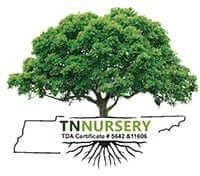Bird's the Word
Share
Birds the Word - Hummingbird, More Precisely
North America is well-known for its hummingbirds. In fact, the continent has 27-29 species of hummingbird with 15-16 species inhabiting the USA from the East to the West Coast. The most common species in the West of the US is Anna’s Hummingbird and one of the most common species in the east is the Ruby Throated-Hummingbird, both stunningly beautiful bird species. Enchanting to watch at any age, hummingbirds spend their time feeding from flowers and myriads of small insects including mosquitoes. Hummingbirds have a high metabolism and need to feed every 10-15 min. Over the course of the day, they will consume half of their body weight in nectar. Their fast flight and voracious appetite bring them to visit 1000-2000 flowers per day! However, not just any flower will do and some flowers are more appropriate than others.
Plants That Will Keep Your Garden Humming!
Hummingbirds are well-known for their long, slender beaks and for their attraction to bright red flowers. These flitting tiny birds prefer flowers that have an upright, tubular structure that allow them to hover in place while they extend their beak and long tongue down the flower.
Thus, some of the most appealing plants to attract these gorgeous birds to your garden are trumpet-shaped with vibrant colors. Fortunately, there are many to choose from and we have four ideal plants listed below to add to your garden.
Trumpet Vines (Campsis radicans) is native to the central and eastern USA and is commonly found growing in forests, thickets and swamps. You probably recognize it from growing on a telephone pole close to your house.
Their bright orangey-red, deeply tubular blooms are a favorite for hummingbirds as they are a rich source of nectar for these beautiful birds. The plant’s vining nature also allows for visit, high and low as the hummingbirds peruse the garden.
Trellis this gorgeous vine across your gazebo or a close to a patio area to enjoy watching the hummingbirds visit their flowers day after day in the spring. However, this plant is highly flammable so take care when planting near structures around the home.
Red Weigela (Weigela florida) is well-known for its tubular flowers that are rich in nectars, which hummingbirds go wild. The fragrant nectar of this flower will attract repeat visits and hummingbirds will flock to these plants no other.
Additionally, the dense branching and lush foliage of this shrub adds hiding spots for these tiny little birds as well as a myriad of other wildlife. Prolific flowering will provide an ample and rich nectar source that will support several hummingbird individuals throughout their flowering season.
Plant the Red Weigela in a pot as a single plant, as a part of a mixed hedge, or as specimen plant. This shrub will add beauty and attract hummingbirds, and other pollinators, for you and yours to enjoy.
Red Cardinal Lobelia (Lobelia cardinalis) is another plant that will add a splash of bright red beauty to your garden as well as a delightful snack for hummingbirds. They are easy to grow and native to the USA.
This plant produces racemes of bright red flowers starting from midsummer which stand 3-4 ft high well above the foliage of the plant, making them an obvious target for hummingbirds to find. The upwardly oriented flowers are easy for the hummingbirds to access and are rich in nectar.
Red Cardinal Lobelias love moist environments – add them to your rain garden or along a pond edge to watch the hummingbirds dance across their wetland habitat. They also make a great flower to add to a walkway border.
Coral Honeysuckle (Lonicera sempervirens) is a vining plant which produces whorled clusters of bright coral-colored flowers that are very long in slender, which are ideal for hummingbird beaks. It is easy to grow and native to eastern USA.
Hummingbirds will frequent the flowers and flit up and down the nearly 20 ft of vine that this plant produces. Plant this vining plant on a trellis or a gazebo in your garden and watch it produce gorgeous blooms year after year.
While this plant is beautiful and a delight for hummingbirds, it is considered a fire risk so take care when planting it in your garden. Be sure to plant away from structures to make sure they will not contribute to a fire at your home.
A Sanctuary for Hummingbirds
Hummingbirds are a delight to watch as their bright colors and seemingly cheerful nature bring a sense of zest to a landscape as they flit from one flower to another. And they are a valuable part of the ecosystem as they pollinate countless flowers every year and keep insect populations under control.
While a hummingbird’s territory size depends on the species and the number of resources available, your property could support a family or more of sweet hummingbirds that will aid in flower pollination and keep the flies and mosquitoes at bay! Help them survive and thrive year-round by planting Coral Honeysuckle, Red Cardinal Lobelia, Red Weigela, and/or Trumpet Vines in your garden. These plants are some of the many options for pollinators on your property. Visit TN Nursery’s pollinator page to get more inspiration for keeping your garden buzzing all year long.
